Enterprise column: Considering ‘active transportation’
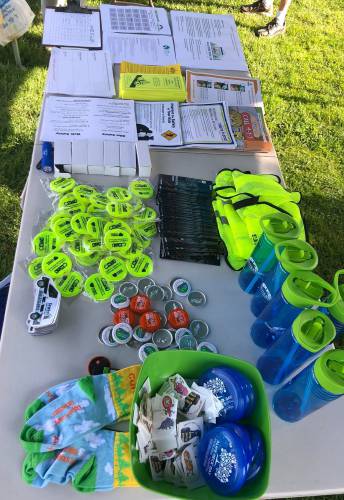
Resources about alternative forms of transportation are displayed at Colburn Park last May during Lebanon's "Curb Your Car Day" gathering. (Courtesy City of Lebanon) Courtesy photograph—Courtesy photograph
| Published: 04-15-2024 1:58 PM |
A “time-space machine” — that’s how Sharon’s Ryan Haac playfully refers to his car.
Particularly when he takes the interstate, the experience is one of disconnecting from one place and, in an astonishingly short time, popping out in another, with an almost “Beam me up, Scotty” sense of disembodiment.
That’s in contrast with Haac’s preferred mode of travel: A cargo e-bike that he uses to take his kids to Sharon Elementary School and for side jaunts just for the fun of it.
“Once we had the cargo e-bike, the task of picking up the kids from school was no longer a chore, it was an enjoyable part of the day,” he said. “Instead of going straight home, we might even ride up the river a bit, just for fun. It’s also let me explore my town and the back roads in a way you can’t always do walking.”
Haac’s e-bike trips are one form of a category of travel called “active transportation” — defined as fully or partially human-powered trips on foot, wheelchair, bike, e-bike, public transit or in a carpool. These modes often involve more walking and social interaction than traveling in the cocoon of your car.
Where can you start adding more active transportation into your life? Try it with short trips. More than half of all trips Americans take are under 3 miles, according to the U.S. Department of Transportation, or DOT. Take advantage of sidewalks, multiuse paths and other infrastructure that makes walking and biking safer. Lobby your municipality for further safety improvements. Local transportation planners and active transportation organizations have estimated there is $7 billion in unmet need for active transportation infrastructure across the country, according to the DOT.
This May, transportation advocates throughout the Upper Valley including the Lebanon and Hanover Bike/Ped Committees, Vital Communities and other members of the Upper Valley Transportation Management Association are launching “Upper Valley Ways to Go!,” an ongoing project to strengthen the region’s transportation options to make them more sustainable, equitable and enjoyable for all.
To turbocharge this launch, here are some of the events and challenges on offer. Be sure to check back at vitalcommunities.org/upper-valley-ways-to-go/ for additional events that will added through and beyond May.
Article continues after...
Yesterday's Most Read Articles
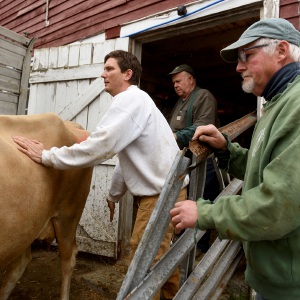 Herd departs Hartford’s last remaining dairy farm
Herd departs Hartford’s last remaining dairy farm
 Bald eagles are back, but great blue herons paid the price
Bald eagles are back, but great blue herons paid the price
 At Dartmouth, hundreds protest ongoing war in Gaza and express support for academic freedom
At Dartmouth, hundreds protest ongoing war in Gaza and express support for academic freedom
 Kenyon: What makes Dartmouth different?
Kenyon: What makes Dartmouth different?
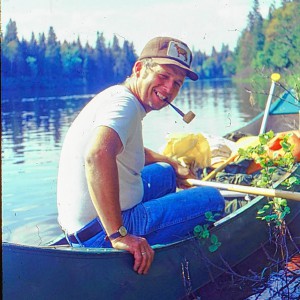 A Life: Richard Fabrizio ‘was not getting rich but was doing something that made him happy’
A Life: Richard Fabrizio ‘was not getting rich but was doing something that made him happy’
May 1 to 31: CommuteSmartNH Spring Statewide Challenge
The Spring Statewide challenge is back again this May 2024. From May 1 to 31, log any trip you take using a mode other than driving in a vehicle alone — such as walking, biking, transit, carpooling, telecommuting (working from home), or any combination of these options. To participate, download an online trip logger or mobile app, log in and track your sustainable trips during May. This challenge is organization-based, so make sure your commute profile has your current employer listed and encourage your co-workers to log their trips for an even better shot at your organization winning. You will automatically be grouped into teams based on the business you include in your profile. Information and registration are at commutesmartnh.org/spring-statewide-challenge.
Wednesday, May 8: National Bike & Roll to School Day
Organize your community to take part. Registration, event-planning support and other resources are available at walkbiketoschool.org.
May 13 to 17: Park Your Carbon (Vermont)
Park Your Carbon is an initiative to help change Vermonters’ transportation and commuting habits by encouraging green ways of travel. Try it for a day, or a week, or make it an ongoing habit. Pledge to replace some car trips — you choose how many and when — with biking, walking, busing, carpooling or working from home, and you can qualify for fun prizes. Take the pledge and learn more at connectingcommuters.org.
Friday, May 17: Curb Your Car Day, Lebanon, Hartford and Hanover
All who live, work or recreate in Lebanon and are getting around May 17 by bike, foot, bus, carpool and other active means are welcome to come by Colburn Park in downtown Lebanon from 7 to 9 a.m. for refreshments, bike checks by Omer & Bob’s, information and good company.
The Town of Hartford is planning a similar event that morning, with refreshments available for bike, foot and bus commuters from 7 to 8:30 a.m. at town hall in White River Junction.
Hanover, meanwhile, will be setting up a temporary divided bike lane on Lebanon Street north of Greensboro Road for the whole day.
May to November: Upper Valley E-Bike Lending Library
The Upper Valley E-Bike Lending Library — a program of Vital Communities, the Kilton Public Library and many, many volunteers — offers a great opportunity to “try before you buy” to allow you to get a feel for how an e-bike might fit into your lifestyle.
The e-bike library has a selection of four e-bikes of assorted styles and retail costs since it began in 2020, more than 65% of the borrowers who responded to surveys said they have already bought an e-bike or are planning on buying one.
The e-bike library travels between various Upper Valley towns, typically staying a week at each. While the e-bike library is stationed at a particular lending location, people can sign up to borrow one of the e-bikes for up to three days. Many of the towns also hold “Demo Days” at which people can try all four e-bikes and take them for quick spins. Learn more at vitalcommunities.org/uvell.
Here are ways that active transportation and the infrastructure that supports it are good for people and communities (adapted from transportation.gov/mission/office-secretary/office-policy/active-transportation/active-transportation):
Safety: Rates of pedestrian and cyclist fatalities continue to increase, demonstrating the need to invest in safe infrastructure.
Economic growth: Encouraging walking and expanding active transportation investments have been shown to boost nearby property values and economic activity and reduce health care costs by encouraging physical activity.
Climate change mitigation: Active transportation includes zero-emission modes such as walking and biking, meaning that active transportation trips can help avoid greenhouse gas emissions that drive climate change.
Equitable transportation access and community connectivity: Transportation access is inequitable in communities across the U.S.: people in low-income areas tend to own fewer vehicles, have longer commutes, have higher transportation costs, and are more likely to be injured or killed on the road. Active transportation can provide individuals with affordable transportation options so they can safely and conveniently reach essential destinations.
Physical and mental health: Only 25% of adults and 1 in 6 high school students meet daily activity guidelines, according to the Centers for Disease Control and Prevention, or CDC. Active transportation networks can help incorporate physical activity in daily life by encouraging people to walk, cycle or roll to get where they need to go — while also avoiding the release of air pollutants, which can harm human health.
Congestion and resilience: In combination with good public transportation access, walking, biking and rolling can replace car trips, thereby reducing traffic congestion.

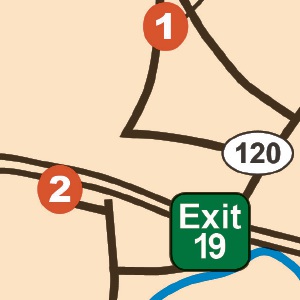 Lebanon moves forward with plans for employee housing
Lebanon moves forward with plans for employee housing Colby-Sawyer president announces plan to depart
Colby-Sawyer president announces plan to depart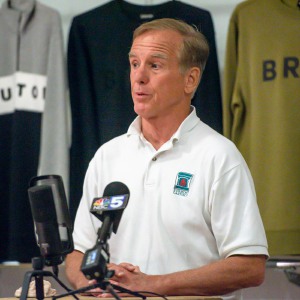 Howard Dean weighs (another) run for governor
Howard Dean weighs (another) run for governor
